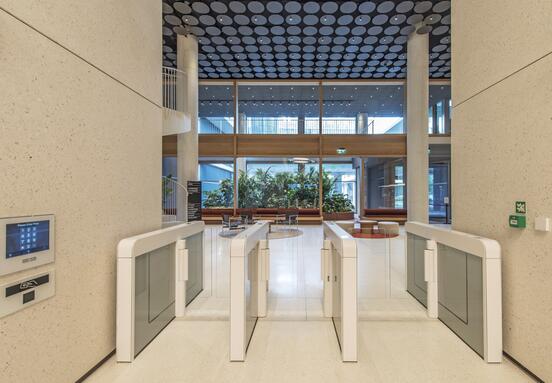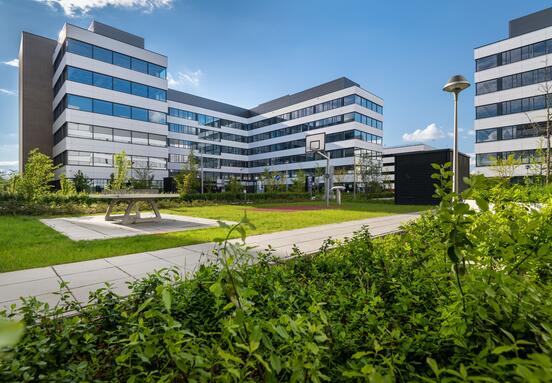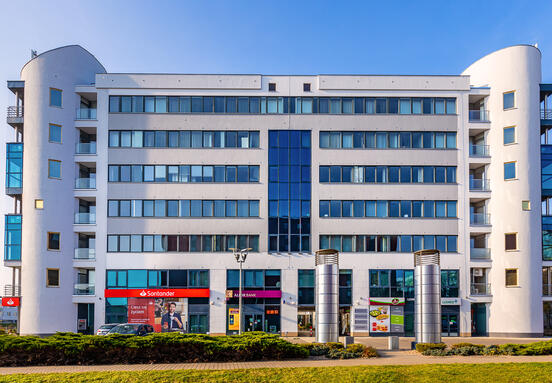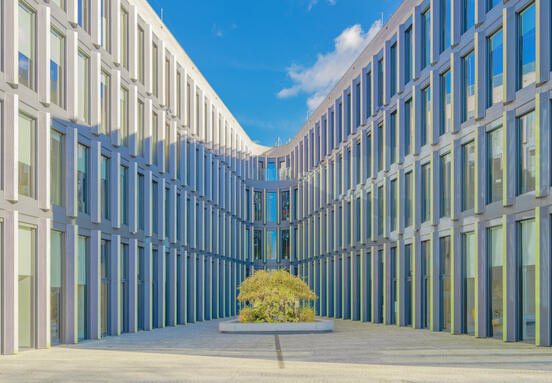The pursuit of flexibility
Amidst a backdrop of automation, digitization and rapid economic transformation, companies try to avoid making long-term commitments. There’s a growing number of companies working on specific projects, hence the changing workstyle which is leading to different approaches to employment. Firms which cannot predict how many people they will need to have on board in a year or five years’ time are unwilling to make commitments under five- or ten-year traditional office leases. That’s because some halfway through the lease a firm’s head office may decide to delegate a team to Warsaw or its Krakow office may win a tender for a big project that would require for instance 60 new employees to be hired right away. The need for flexibility has become so strong that commercial real estate experts face similar challenges on a daily basis. Contractual provisions such as the right to upsize or downsize leased space as required could be a solution then. Time required to implement such provisions and have space fitted out will however remain an issue as given the current construction market such space could be delivered at best within a few months.
Tenants who are pressed for time could take advantage of serviced offices and coworking spaces whose growth has recently greatly accelerated in Poland. In 2018 alone, more than 40,000 sq m of coworking space was delivered to the Warsaw market. Coworking operators offer short-term solutions and unlimited flexibility in adjusting office sizes and desk numbers to changing requirements, renewing or terminating lease agreements on a monthly basis, or booking additional conference rooms by a one-hour notice. Tenants are provided with fitted and furnished offices and can make quick decisions. In this case, a tenant identifies its needs and moves into a new space within just a couple of days.
War for top talent
The labour market has become tight with the workforce dominated by Millennials, who are gaining the upper hand. To meet their demands, companies need to build an appropriate organisational culture. According to Deloitte’s report on Millennials, a positive organisational culture and workplace and working time flexibility are critical factors in the choice of an employer. An appropriate office is instrumental in building such a culture and a flexible workplace. As a result, an HR team should be involved in the process of searching for office space. To fulfil the growing employee expectations regarding workplaces, developers are offering tenants improved quality. They are outdoing one another to gain a competitive advantage by introducing new green and technological solutions and all sorts of wellbeing initiatives. LEED and BREEAM certification was introduced 20 years ago – it can hardly be called a new trend today. WELL certification is new and fashionable. It measures the effect of a building and an office on the user’s health and wellbeing by monitoring the quality of the office fit-out, but primarily the quality of air, temperature and humidity.
As certification is not enough for some, developers will go an extra mile for them and offer building apps which are an extremely attractive amenity. Such apps have already become a must-have for office buildings in many countries, but are just emerging in Poland. These include, for instance, spaceOS, Connected by Skanska or SPACEFLOW from Online Real Assets. Building apps combine various functions: they can replace access cards, inform about events, attractions and a lunch menu in a building. They also serve as a virtual reception desk that registers visitors and notifies tenants about their arrivals. Apps synchronised with a car park management system can help find parking spaces for guests. Such apps also offer tenants flexibility in choosing functionalities – they can be linked to a system of booking conference rooms or used to monitor the use of office space to improve efficiency.
Isn’t the office market ahead of mentality changes?
Office changes are a long-term process that requires a change to employee thinking. Open spaces first became fashionable before their real functionality came to be appreciated. “One size fits all” is going out of date and tenants expect fully bespoke solutions. That’s the reason for the growing importance of workplace strategy specialists. If they are engaged in the search for a new office, we can take care of employees’ habits, monitor the efficiency of space use and create an office concept appropriate to the changing workstyle. Spatial solutions need to be aligned with a company’s organisational culture. Will the agile workplace approach work in an organisation where its manager keeps watch on desk-sitting times? Technological advancements enable us to work anywhere and employees expect employers to provide flexibility and consent to remote work. Given holidays, sick leaves and other absences, desk occupancy in a typical organisation averages 50-80%. This was not taken account of in open space plans, but by creating an agile workplace environment the issues of low desk occupancy and the perennial lack of conference rooms for ad hoc meetings can be easily addressed. In addition to the implementation of desk sharing and the rate of 0.7-0.9 desk per employee, this is accompanied by an adequate increase in alternative workplaces such as rooms for ad hoc meetings or silent work rooms. This helps us to optimize leased space and to design a flexible office without assigned desks. This also facilitates adaptation of office space to team reshuffles and additional project work. It may well be the single trend that the office market will adopt sooner in comparison with changes required to an organisational culture or employee thinking.
Source: Cushman & Wakefield








